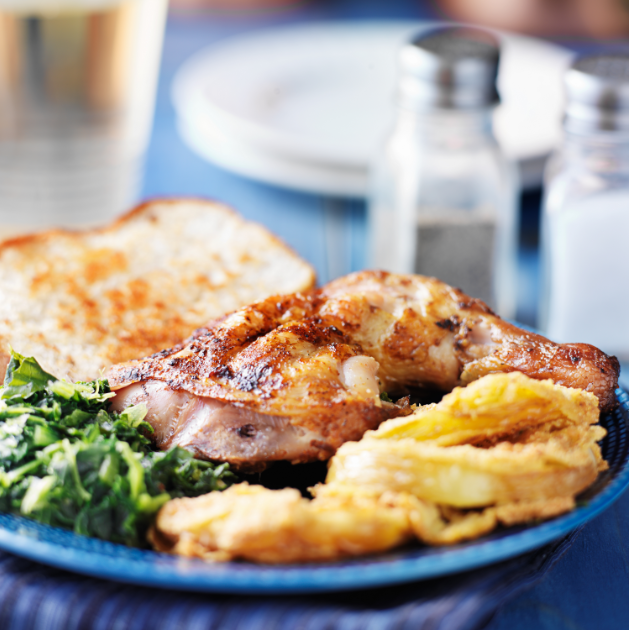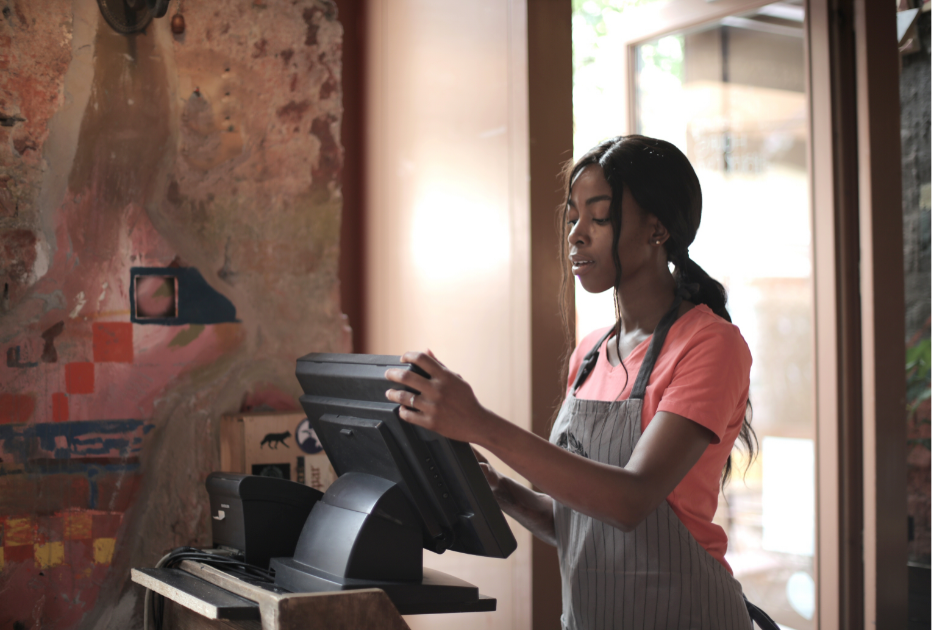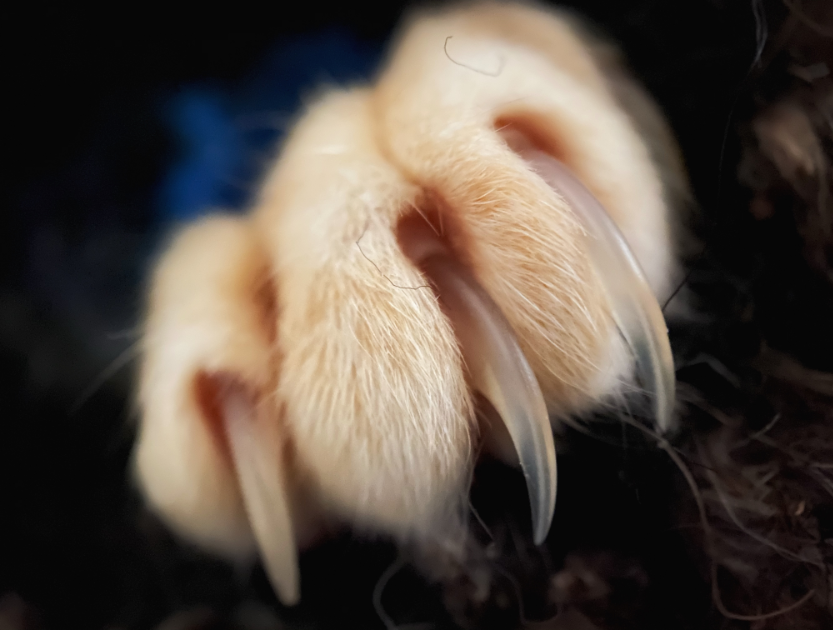In the second presidential debate — held less than 48 hours after the release of a bombshell tape where Donald Trump describes sexually assaulting women as well as the release of a new cache of Clinton campaign emails by Wikileaks — the candidates outlined two very different visions of a future America.
Photo by Robyn Beck/AFP/Getty Images
Trump defended his taped remarks from 2005 as "locker room talk," while calling on Muslim Americans to report suspected terrorists in their communities and vowing to appoint a special prosecutor to investigate Clinton's handling of her state department email and throw her in jail. Clinton promised to expand Obamacare to make health care more widely accessible and affordable and establish a no-fly zone in Syria, while deflecting questions about taking different positions in public and private by citing Abraham Lincoln.
Two polls taken immediately post-debate showed a Clinton victory, while a focus group panel gave the edge to Trump.
We asked Upworthy's social media followers if last night's debate changed their mind. Most said it didn't. Some were convinced to pull the lever for a different candidate — and for several, it was not one of the two on the debate stage.
Here's what they said — who they were voting for, who they're voting for now, and why.
Interviews have been edited and condensed for clarity.
Tara Donna, tax office manager, Arizona
Was voting for: Jill Stein
Now voting for: Hillary Clinton
Jill Stein photo by Win McNamee/Getty Images; Hillary Clinton photo by Rick Wilking/AFP/Getty Images.
Why she was holding out for a third party: "I was a die hard Bernie supporter in the 'Never Hillary' group. I was leaning towards Jill Stein until her stunt at the DAPL [Dakota Access Pipeline]. I love that Jill actually wooed the Bernie folks. I feel like Hillary expects us to fall in line because Bernie has asked us to and that upsets me. For the record I'm against the DAPL, but you can't graffiti property. As a presidential candidate there should be a modicum of decency and decorum."
What she thought of Trump's debate performance: "I thought Trump was a disaster. He looked angry and hurt. His response to the leaked tape said it all. The official apology he made, which was clearly written by somebody else, was trampled on. He reverted to 'locker room banter,' which is talking about sexual assault."
How Clinton impressed, and didn't impress, her: "Hillary was poised, but angry at times. I feel she needs to answer for her treatment of Bill's women. Bill's behavior shouldn't be counted against her, but she destroyed those women and needs to answer for it."
What she plans to do now: "I'm voting for Hillary after last night. I'm not happy about it. I'd love to follow Iceland's footsteps, kick out the government and rewrite the Constitution."
Kaden Meeks, college student, West Virginia
Was voting for: Didn't plan to vote
Now voting for: Donald Trump
Photos by Paul J. Richards/AFP/Getty Images.
Who he backed initially: "Trump — mostly because I consider myself a Republican and I agree with a lot of his ideas, even some of the more radical ones. I liked his immigration ideas, I liked that he was straightforward and I liked that he had made questionable decisions in his life to get where he is now. I always have looked at the presidential position as a decision-making job, and I think that Trump would be bold enough to make controversial decisions rather than putting them off as the issues get worse."
How Trump temporarily lost his vote: "I had problems [with] the comments about his daughter. I don't know how any man could agree that his daughter is a 'piece of ass' or refer to her body shape as beautiful or give other men information on his daughter's breasts. I think that just shows how truly narcissistic and gross he really is. Any human with kids generally loves, protects them and is proud of their offspring, but Donald Trump seems to use his daughter as a credential. Her physical appearance is used as a weapon, and to me, that is just too far."
How the debate, and its aftermath, convinced him to come back around: "I actually watched a video of him apologizing for what he had said, and then I saw another video of a room full of independent voters, and the vast majority said that Trump had gained their vote. This was shocking to me considering it hadn't happened so far, and even CNN said he had 'exceeded expectations,' so I just knew he was starting to get a feel for what he was doing and maturing as a politician."
"Like I said, I always have liked his ideas, his demeanor is the issue, and through watching those things, I realize he was capable of having a suitable demeanor."
Patricia Billingsley, retired state employee, Oklahoma
Was voting for: Undecided
Now voting for: Gary Johnson
Donald Trump photo by Saul Loeb/AFP/Getty Images; Gary Johnson photo by Molly Riley/AFP/Getty Images.
Her feelings about Clinton, in four words: "Most knowledgeable, least ethical."
Her feelings about Trump, in three words: "Narcissistic, erratic, lazy."
What she thought of Trump last night: "Aggressive. Defends own sleaze by pointing out others' bad behavior."
What she thought of Clinton last night: "Ignores questions/statements she does not want to hear, repeats talking points."
What she'd like to see in the third debate: "Wish Johnson [was] in debates to compare in person, not just on what I read and hear."
Jessica Medina, web designer, Florida
Was voting for: Hillary Clinton
Now voting for: Undecided
Hillary Clinton photo by Tasos Katopodis/AFP/Getty Images; Gary Johnson photo by Bill McCay/SiriusXM.
How she planned to vote before last night: "I've never liked either choice, but Clinton is certainly the lesser of two evils in my eyes. After the last debate I was left thinking 'oh okay, I can do this...' This one kind of turned it back and made me feel uneasy again."
Why she felt this debate was different: "The moderators certainly appeared biased in my opinion. It's no secret that Anderson Cooper hates Trump's guts, but I felt like they were certainly professional. And I agreed with everything they called him out on — I truly appreciated the fact that they didn't let him get way with his diversion tactics. But it set up Hillary for an advantage, which automatically had me raising an eyebrow."
What about Clinton's performance turned her off: "She had so much prepared for this debate, and that preparedness left me feeling a disconnect. I'm sure she has a sincerity about her in person — everyone says that her strength is listening and making people feel heard — but in this particular format, I don't think it translated well across the TV to the viewers at home."
How she plans to vote now: "It will depend on how she performs in the next debate, and I'll be doing a lot more research to see if a vote for Johnson is really just throwing a vote away (or, God forbid, dividing the vote and letting Trump take it). For Trump, nothing could ever convince me to vote for him."
How Clinton could win her back: "I would like to see more authenticity. We know she's smarter and more experienced than Trump. We know she's prepared to counter his arguments. So I would like to see her just have a conversation instead of spewing rhetoric that she has decided upon beforehand. I would like to be able to trust her."
Denise Smith, former museum programs manager, Virginia
Was voting for: Write-in vote
Now voting for: Hillary Clinton
Bernie Sanders photo by Justin Sullivan/Getty Images; Hillary Clinton photo by Tasos Katopodis/AFP/Getty Images.
How she's voted in the past: "My first vote was for Jimmy Carter. But I also voted for Ronald Reagan and Daddy Bush … once. I was a Reagan Democrat, I voted for him the first time because he spoke of a flat tax to cover everyone. We went bankrupt during his presidency, and I would not piss on him if he was on fire after that! Daddy Bush spoke about fair trade and jobs on a global market and I voted for that. Got fooled again."
"I actually voted for Ross Perot against Bill Clinton — get this — because my husband fussed at me and said he didn’t want my vote canceling his out. I was stupid in love and never did it again."
Why she was uncommitted: "I was a Bernie supporter to begin with. I was truly disgusted by what happened that knocked him out of the race. I think he had a better chance than Hillary at winning this election, because after 30 years of dirt about her, the rumors, [and] the scandals, I was skeptical of her in office. Plus, though he endorses her now, Bernie ran a good campaign against her."
What convinced her to come off the fence: "I was seriously considering just throwing my vote away. I can’t endorse Johnson or Stein after looking at their platforms. I was thinking of writing in Bernie’s name or, hell, even Lindsey Graham for president but after this week’s tape on his 'locker room' talk and then Hillary Clinton's performance tonight, I’m solidly for Clinton."
Why she could never, ever vote for Trump: "Trump scares me — the thought of him as president. After tonight I know I can’t throw my vote away. Hillary tonight showed me a much better candidate for president. Trump needs a civics lesson on how Congress works. [He] blamed her too much for things no one person can control and if he thinks senators and presidents have that much power, he’s nuts. He’s going to prosecute her above our judicial system? That’s dictator talk."
Deadlines to register to vote in most states are closing fast! Many have already passed, some are coming up in the next few days. If you still haven't put your name on the rolls, this tool can help you get there. And if you have registered, here's how you can find your polling place.




 Beaver on riverbank.
Beaver on riverbank.  Pbs Nature Swimming GIF by Nature on PBS
Pbs Nature Swimming GIF by Nature on PBS  An actual beaver dam on the now-thriving Price River
An actual beaver dam on the now-thriving Price River 
 Who doesn't love Pluto?
Who doesn't love Pluto?  Pluto agrees.
Pluto agrees. 
 Woman in denim jacket covers face with sleeve, standing outdoors with blurred background.
Woman in denim jacket covers face with sleeve, standing outdoors with blurred background. Woman with outstretched arms in a sunlit field, enjoying the outdoors.
Woman with outstretched arms in a sunlit field, enjoying the outdoors. Lush forest with vibrant green and orange foliage in soft, misty sunlight.
Lush forest with vibrant green and orange foliage in soft, misty sunlight. Friends laughing and drinking coffee at a cozy cafe table.
Friends laughing and drinking coffee at a cozy cafe table. Woman with curly hair in sunlight, eyes closed, wearing a purple top.
Woman with curly hair in sunlight, eyes closed, wearing a purple top. Man smiling with hand over face, standing outdoors against a blue sky background.
Man smiling with hand over face, standing outdoors against a blue sky background. Hand painting a still life on canvas with blue and orange tones.
Hand painting a still life on canvas with blue and orange tones. Woman sitting on a chair in the water, writing in a notebook at sunset.
Woman sitting on a chair in the water, writing in a notebook at sunset.
 "Bought an espresso machine, took some time to learn how to dial it in and pull a proper shot."
"Bought an espresso machine, took some time to learn how to dial it in and pull a proper shot." "Frozen meals are just as unhealthy, but much cheaper."
"Frozen meals are just as unhealthy, but much cheaper." "I’ve embraced the gray!"
"I’ve embraced the gray!"  "Bidet toilet seat is cheap, easy to install, much easier and faster to use."
"Bidet toilet seat is cheap, easy to install, much easier and faster to use."
 American portion sizes are colossal.Canva Photos
American portion sizes are colossal.Canva Photos American public restrooms aren't very private.Canva Photos
American public restrooms aren't very private.Canva Photos Cashiers in America stand all shift long.Canva Photos
Cashiers in America stand all shift long.Canva Photos America loves the Pledge of Allegiance.Canva Photos.
America loves the Pledge of Allegiance.Canva Photos. Cosmetic surgeries on pets are...a choice.Canva Photos.
Cosmetic surgeries on pets are...a choice.Canva Photos. America loves extra sugar in savory foods.Canva Photos.
America loves extra sugar in savory foods.Canva Photos.